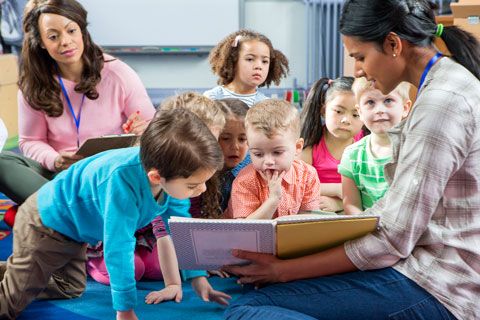There are many simple yet effective ways that teachers can engage ELL students in meaningful learning activities and help them interact with their peers. As a result, ELL students will benefit from active participation, such as conversations and discussions in class with both teachers and other students. ELL students also will develop their English language skills as they broaden their knowledge and understanding of their new culture.
Who are English Language Learners (ELL)?
- Children who enter your class with a home language and limited English often are identified as ELL. They may differ in more ways than language from classmates as they bring their prior experiences and cultural practices with them. Their cultural traditions and practices, including music, stories, and games, can enrich the classroom and school. As with all children, some may be experiencing preschool or child care as their first group experience outside of the home and family. For others, it may be a return to care or school in a new place.
What should I expect when working with students who are ELLs?
- ELL children’s initial participation may differ from children who are native English speakers. If a child speaks little or no English, she is not likely to join all classroom activities right away. She might continue to use her first language for a time to communicate. She also may observe peers and activities for several days or weeks as she begins to interpret and integrate the routines and practices of the class. After a time of silent observation, however, most ELL children begin to join activities.
- Each ELL student is unique. A variety of sociocultural factors can affect language learning. ELL students might face additional challenges, such as acclimating to a new culture and status that interfere with learning English.
What can teachers do to help students who are ELLs?
- Always build on their child’s strengths, talents, and interests.
- Provide opportunities for ELL students to develop communicative strengths in English. At the same time, use visual supports, such as a picture schedule of the day’s activities, to inform the child of the daily schedule and its predictable sequence.
- Have ELL students participate in hands-on activities. These sorts of activities allow ELL students to be more involved because they do not rely as heavily on language. Some examples of activities might include drawing, constructing, and helping with a daily task, such as being the line leader for recess.
- Familiarize yourself with basic cultural differences and practices, especially for the cultures represented in your classroom. You might begin by learning a few greetings or short songs in their home languages and incorporating them in your large group times; learning about important holidays, such Chinese New Year; and having books and audio recordings available in other languages.
- Use the new language. Children are curious about different languages, especially if they speak only one. Have an ELL student (or parent) teach a few words in his own language (such as “yes,” “no,” greetings, primary colors, or counting). Classmates often embrace the magic of new words to convey familiar concepts. Use or demonstrate skills, such as counting to five in Spanish. For many children, the concept of a second language is new and interesting.
- Consider the buddy system. Children often are willing and want to help an ELL peer. They can help with daily transitions. Watch to ensure that they respond to an ELL child as a peer and not as a baby.
- Welcome parent volunteers into your classroom. Parents who speak languages other than English and come from cultures outside the United States will have the opportunity to see how you conduct your classroom, and you will get to know the parents better. These parents are a resource as well for communicating with their child in the early days of preschool.

Lumi Hartle
Dr. Lumi Hartle is an Instructional Assistant Professor in the Department of Special Education at Illinois State University in Normal, Illinois. She has over 10 years of experience working in the field of general education and special education. Lumi earned her Ed.D. in Special Education from ISU in 2017. Her research interests include social and language development of young children, parent engagement, and teacher preparation in early childhood special education.
Biography current as of 2022


